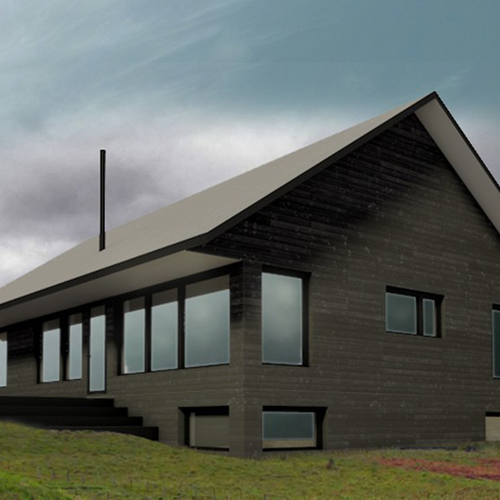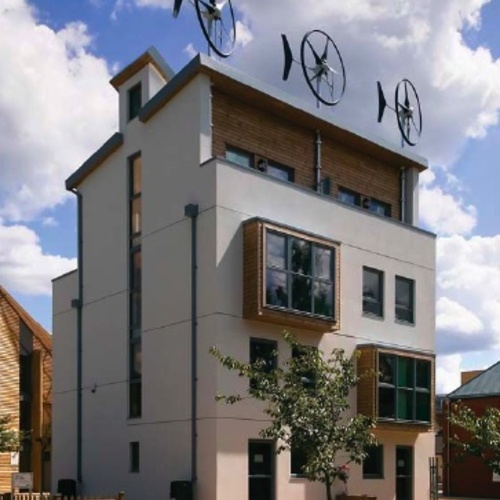
This week’s Q&A Spotlight is more about the business of building, and less about the science of building. The case involves a homeowner who is struggling to find a balance between his ethical responsibilities and a desire to save a few bucks.
Matt Mesa has been working with a design-build firm on plans for a 1600-square-foot house in Hood River, Oregon. The two sides of the business are separate, he writes in a Q&A post at GreenBuildingAdvisor, and so far his dealings have been with the folks on the design side.
“We hired the design part of things and have verbally told the build side of things that we want them to build our house,” he says. “We’ve been with these guys for 2 to 3 months now and, admittedly, have built some kind of rapport with them.”
The firm has a reputation for good work, but it’s expensive. “We’re looking at $400K or about $250 a square foot,” he says. “It’s not an extravagant house and it’s a pretty simple build.”
Now a friend is strongly suggesting that Mesa send the plans out to a couple of other contractors and ask for competitive bids.
“So, given that I’ve traveled down the road a bit with this firm, am I doing the right thing by putting our plans out for bid?” he asks. “We haven’t signed a contract yet, but we’re getting close to doing so. There’s something that ethically bothers me about this, but maybe this is quite common. I feel like I’m pulling the rug out from under them, sort of.”
Should he get some additional bids? Or push ahead with the firm he’s already got?
There’s an advantage to using a single firm
…
Weekly Newsletter
Get building science and energy efficiency advice, plus special offers, in your inbox.

This article is only available to GBA Prime Members
Sign up for a free trial and get instant access to this article as well as GBA’s complete library of premium articles and construction details.
Start Free TrialAlready a member? Log in















8 Comments
My piece
Thanks for the plug, Scott. I believe you can read the article in its entirety at the link, but if anyone would like a pdf, get in touch - my website (and contact info) is easy to find.
Equity in a relationship
Friends mean to be helpful. And we all appreciate some reassurance about important decisions we are making, which can add weight to the value of their advice. The "you should get bids" is probably the most common "well meaning" advice friends give to folks working with design/build firms. But this advice is based on some fundamental misunderstandings of the value of design integrated with construction. And it is often given by friends who know as little, or less probably, as the client does about that value.
One is the fallacy that an important decision about who to work with can be reduced to least cost. As Dan points out, its the rare plan set that does not require some level of interpretation. By the time the firm who was thorough and thoughtful in preparing their bid has been rejected for also being the most expensive (in my experience, the more carefully you think about a project the more likely you are to recognize all the little things you would otherwise overlook) the client has recognized the folly of the low bid too late.
By design, an effective design/build process has this thorough/thoughtful equation baked in. The cost of a project is best determined iteratively - ideas are generated, a budget is established as a reality check, the scope is adapted and construction insights applied to discover what everyone wants: what's possible at what cost - and from there smart choices are made by the "big three" all working toward that common goal.
Steve talks about expectations. Here is what is important to me. A potential client for design/build service should know that they have the design/bid option. In that version, they must invest in a detailed set of construction documents that are being created for the express purpose of seeking competitive bids. That plan set must be comprehensive and complete if those bids are to serve that purpose. The real cost of the project will be discovered at the end of that process, and the iterative process I described will begin then - and probably with adversarial relationships as everyone digs in to defend the righteousness of their position (the finger pointing begins).
Trust is fundamental to the design/build process. And the relationship with the design/builder is the foundation of that trust. If you have it, why waste it.
Trust is Not Always Baked In
In a competitive market, two good builders will be priced pretty close to each other when it comes to the construction costs. The building and mechanical systems that make a building Green and Sustainable are not open to great interpretation. They should match the plans and design specification. If not, then the specs were not detailed enough, or the bidder took some unwarranted liberties with the interpretation of those plans and specs. A competitive bid is not always used to learn what the lowest cost is, but can also be used to learn what has been omitted from a low bid, or inferred into the specs by the high bidder. Comparing two (or more) bids allows the homebuyer to learn more details about what will be done at any given cost through further discussions with the bidders. A bid that is 10% to 20% lower is likely to be missing something, but the higher bidder may be including some feature or product that the buyer may not want or need.
My experience tells me that most of the cost variance between two bids is in the spec level of the interior finishes rather than the shell and MEP contracts.
And finally, trust cannot be assured. Even in a Design/Build process, trust must be built and verified. It cannot be taken for granted.
chasing the low bid?
It makes more sense to sit down with the GC and go over the 400K number to see where it comes from and where there are savings. A smallish house will have a higher cost per square foot, but there are going to be opportunities to save money and still get a nice house. For example:
Does the GC always use the same window supplier? I'm pricing triple pane windows for our new house and have 2 bids so far, with one almost double compared with the other, although the less expensive are UPVC while the more costly are aluminium clad wood. Both have great numbers and are really nice windows. Saving 25K makes us lean toward the INTUS UPVC.
Virtually every aspect of the project will offer choices.
"work expands to fit the time available for its completion".
Parkinson's Law states: "work expands to fit the time available for its completion". The corollary says: cost expands to fit the resource made available to do a thing; Parkinson if you want something done fast, give it to a busy person.
Its a fundamental principle of design, manufacturing, distribution etc, that the more variety in fastener size and driver head style, the more expensive and longer to make anything. You can relate that metaphor to the question of bringing additional builders and proposals into the new house project.
The "cause of cost" and cost over runs is "variety" (variation) and that causes increased project cycle time (from beginning to ending).
Calculating the fully loaded costs of building anything cannot be limited to the design-build phases alone. The more days and weeks to takes to complete a project (end to end), the more it costs; directly and indirectly. Losses are as much a cost as invoices for time and materials. Not getting something done to plan is a huge cost in budget, not to mention losing the momentum and commitment of the other stakeholders.
Isolating the house project to two steps: design and build, is artificial and sends folks chasing after false ideas that can never be realized (i.e. savings)
Everyone knows the single most problematic issue in any project, whether a new house, a renovation, a car repair, or a root canal and crown, is the time from when you commit to launch the project through all phases to its absolute completion.
All the reasons above: integrity of the relationship, best knowledge of detail, partner synergy, committed to make it right, a sense of ownership of the work quality and the product, best understanding of the client, etc, apply, and it is these things that ensure that cycle time is contained and variety (change and variation) is managed and avoided.
"The more contractors, the more the cost" is a truism in building and everyone here know this. To bring a new builder in multiplies exponentially all projects dimensions to result in more density, depth, width and length in the projects costs and life cycle.
Managing expectations from the start
As others have said, it's important to manage the expectations of all parties from the start. This story sounds like there was a weakness in the "from the start" phase. Cost per square foot isn't a great metric, and can easily be the enemy of satisfaction and quality, but Mr. Mesa seems to have been shocked by the number that he received. In my view, early discussions of budget, costs, and trade-offs ought to have prepared all parties for the final cost numbers, and reached agreement on the desirability of all the chosen targets. The final numbers should not be a surprise, and that freedom from surprise is one of the advantages that a design-build firm ought to provide.
A glimpse of the alternative is shown in the surprising number of Fine Homebuilding articles on custom homes, in which the architect states, without apparent embarrassment, that the final cost of construction was 50-100% more than predicted.
If the final cost projections were a big surprise to the future owner, then there was a failure earlier in the process. On the other hand, if the costs are still in line with earlier plans and projections, and the owner has suddenly decided that he can shave dollars somewhere, then we may have a psychological/emotional issue within the owner. It's frightening to contemplate spending $400K, or whatever the figure is. Talking the owner down from what suddenly seems to him like a ledge is easier, if from the start, the owner received a clear and detailed education in the options, choices, and the advantages of each, and fully agreed at each stage before the team moved on.
The homeowner responds...
Hi all
Great dialog! I did not know my question was being featured, and it's nice to see the various opinions, advice, and admonishments! Just to clarify--during our first meetings with the design/build firm, we discussed our target budget. We all knew going in and, over the last few months, we've had several budget meetings where numbers were refined as new information was gained. The process worked just like they said it would. So, there was no "sticker shock" at this number and we've generally been within 10% of our original target as we've moved along. My question was really a reaction to my friends query--that I would be better served by getting some bids to compare to the numbers being generated by the design/build firm. But, based on the responses to my question here, I've come to the conclusion that getting more bids will not serve my best interests and we've decided to go full steam ahead with the design/build firm. I've also gleaned a lot of insight from you all about the design/build process, which helped. So, in the end, no surprise or shock at the cost estimates, really just a question related to being a smart shopper. I'm confident we're on the right path. Thanks all--can't say enough about the GBA--it's a wonderful resource for amateur and pro alike.
Cheers
Matt
history of design/build
As someone who used to work as an architect, my first thought mirrored some of the others. Why go to a design/build firm if you don't want the same firm to build it? The benefit of design/build is the efficiency baked into a one-stop shop where the designer also has an integral connection to the construction. Especially for unique, individual projects involving different construction methods or design aesthetics.
As far as costs, these are always negotiable. The firm should have no problem explaining their reasoning and allowing for less-expensive options. That's a natural part of the process; if they fight every detail, that can be a red flag.
Design/build used to be illegal for some situations because it was considered an unfair advantage to do the drawings and then bid on them (having a more intimate understanding of the design than other bidders). Even where it was legal, it was often the red-headed stepchild of construction on the theory that it watered down both design and building (slave to both, master of neither). To be fair, this was sometimes true, but more so because experimentation and innovation was stifled rather than supported. Now, design/build is recognized more for what it should be; a union of positives rather than negatives. Indeed, if I were graduating from an architectural program today, design/build would be my focus. So to sum up, unless there's a strong reason (other than something a friend said), I would suggest dancing with the one who brought you, but not being afraid to ask questions and express opinions.
Log in or become a member to post a comment.
Sign up Log in